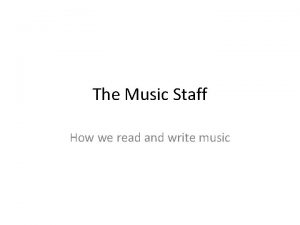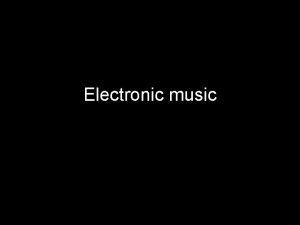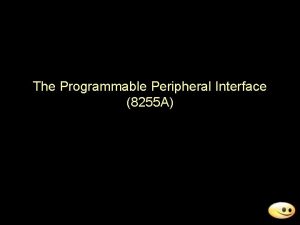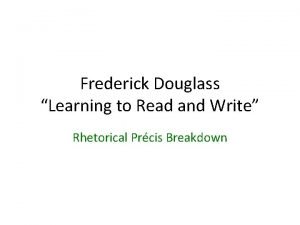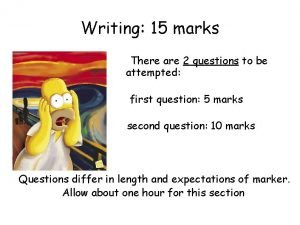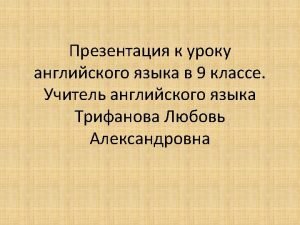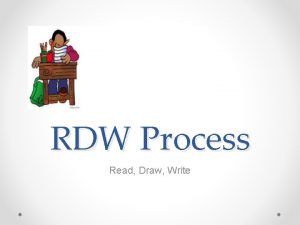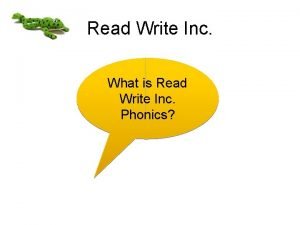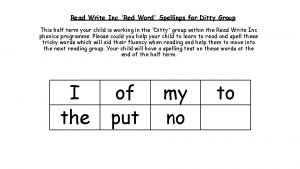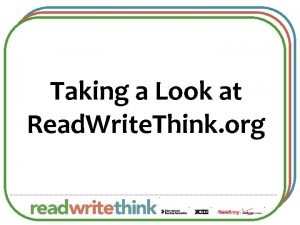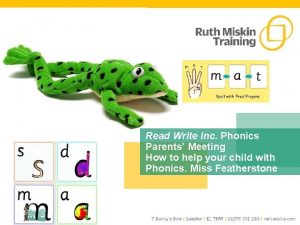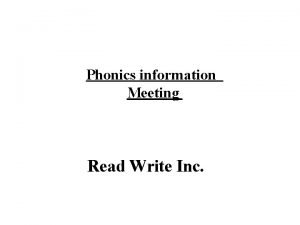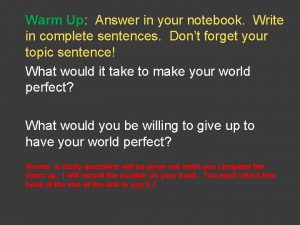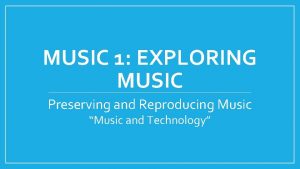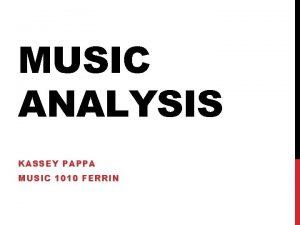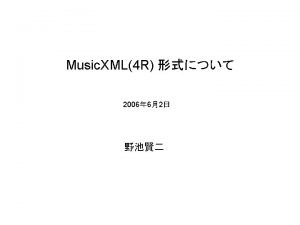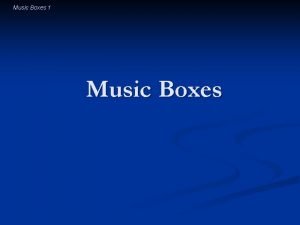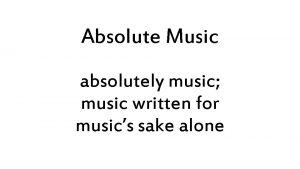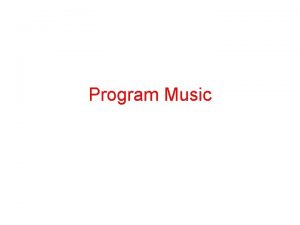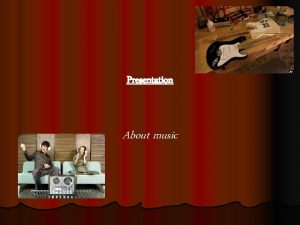The Music Staff How we read and write

































- Slides: 33

The Music Staff How we read and write music

Music is made up of sounds that we hear. We can make the sounds by singing or by playing instruments.

People needed a way to remember all the music they wanted to sing or play • Long ago, people began writing notes to stand for sounds. They wrote them higher and lower to stand for different pitches.

Music Notes We use oval-shaped notes to write music. Most notes have stems attached.

The Music Staff Now we use a staff with five lines for writing music.

The note head goes in a space or on a line. • Line notes look like this • Space notes look like this

Can you identify line and space notes? Say “line” or “space” for each note, then click on the sound icon to see if you were right. Click here for Internet practice on line and space notes

The lines and spaces have numbers. • The bottom line is the first line. • The top line is the fifth line. • Between the first and second lines is the first space. • There are four spaces inside the staff lines.

Outside spaces and ledger lines When notes are too low or too high to be written in the staff, we use ledger lines. Space above staff First ledger line above Space below staff First ledger line below Space below first ledger line Second ledger line below Space above first ledger line Second ledger line above

Which line or space? For internet practice in identifying lines and spaces, click here.

Notes are named for letters • We use seven letters to name musical notes. • A, B, C, D, E, F, G • After G, we start over with A • Each line and space of the staff is used for one pitch.

Clefs Long ago, people wrote a letter on one of the lines of the staff. They found the other notes by counting up and down on the staff. Click icons to hear name of each note.

Three Clefs • Now we use just three letters to help us find notes on the staff • They are F, G and C • Each one is written a special way G F C

The G Clef • The G clef curls around the second line to locate the note G. • It is the G that is five notes higher than middle C.

The F Clef • The F clef curls around the fourth line • It has two dots, above and below the fourth line. • It locates F five notes below middle C.

The C Clef • The C clef curls both directions to show middle C. • The C clef can be placed on any line. • For viola music it is placed on the third line. (Click to hear the C)

Instruments Use Different Clefs • Violins use the G clef, also called the treble clef. • Violas use the C clef. On the middle line, it is called the alto clef. • Cellos and basses use the F clef, also called the bass clef.

Which Clef to Use? Click the sound icon next to the name of the instrument that uses each clef. Violin? Viola? Cello? Bass?

Count up to find note names A clef tells us the name of the note that goes on a line. The space above that line is named for the next letter in the music alphabet. The space above the G line is A because the music alphabet starts over after G. The space above the C line is D. The space above the F line is G.

The next line is named for the next letter. B comes after A. E comes after D. The music alphabet starts over after G.

The next note is a space note. Can you tell what note will be next in the pattern?

Did you predict correctly? Remember the linespace-line-space-line pattern. An extra line is added for the C. The extra line is called a ledger line.

Did you get it right? A space note is placed above the ledger line.

Do you understand the pattern? More ledger lines can be added as notes go higher.

Notes keep going up.

Counting down lines & spaces The space below the line a clef locates is named for the letter that comes before the clef note in the music alphabet. G F E Can you say the music alphabet backwards? D C B A G

Going down the staff we go backwards in the music alphabet. Remember the line-space-linespace-line-space pattern.

Notes go as low as we need them. We add ledger lines below the staff the same as above.

Learn the notes for your instrument. Each of the next four pages is for a different instrument. Study the one for your instrument.

Note names for violin These notes are the same as the white keys on the piano. Click the sound icons to hear the sound of each one. Click here for a Bingo drill on violin note names

Note Names for Viola These notes are the same as the white keys on the piano. Click the sound icons to hear the sound of each one. Click here for a Bingo drill on Viola note names. (Microsoft Excel required)

Note Names for Cello These notes are the same as the white keys on the piano. Click the sound icons to hear the sound of each one. Click here for a Bingo drill on Cello note names. (Microsoft Excel required)

Note Names for Bass These notes sound one octave lower than the same white keys on the piano. Click the sound icons to hear the sound of each one. Click here for a Bingo Drill on Bass Notes. (Microsoft Excel required)
 Online music portfolio
Online music portfolio How to read staff
How to read staff How to write 100 pesos
How to write 100 pesos Read and listen to the text answer the questions
Read and listen to the text answer the questions Romantic era art song drawing
Romantic era art song drawing Beats organized into recognizable accent patterns
Beats organized into recognizable accent patterns A music that employs electronic musical instruments
A music that employs electronic musical instruments Pamulinawen is what musical form
Pamulinawen is what musical form 8255 ppi architecture
8255 ppi architecture Read the transcriptions and write the words
Read the transcriptions and write the words Learning to read and write frederick douglass analysis
Learning to read and write frederick douglass analysis Write in your notebook
Write in your notebook Magnetic read and write mechanisms
Magnetic read and write mechanisms Read and write 15 marks
Read and write 15 marks Read and write the activities these texts advertise
Read and write the activities these texts advertise Read draw
Read draw Talk, read, talk, write resources
Talk, read, talk, write resources Rwi praise phrases
Rwi praise phrases Rwi red group
Rwi red group Seek time hard disk
Seek time hard disk Read write think.org
Read write think.org Read write inc hand signals
Read write inc hand signals Read write inc spelling lists
Read write inc spelling lists Write a review of book you have recently read
Write a review of book you have recently read Read think talk write cycle
Read think talk write cycle Read write think trading card
Read write think trading card Ruth miskin fred talk games
Ruth miskin fred talk games Types of concrete poem
Types of concrete poem Read write right
Read write right Rwi colour progression
Rwi colour progression Read write inc split digraphs
Read write inc split digraphs In your notebook write about what to do and what not to do
In your notebook write about what to do and what not to do Read write serve
Read write serve Read write inc simple speed sounds chart
Read write inc simple speed sounds chart

